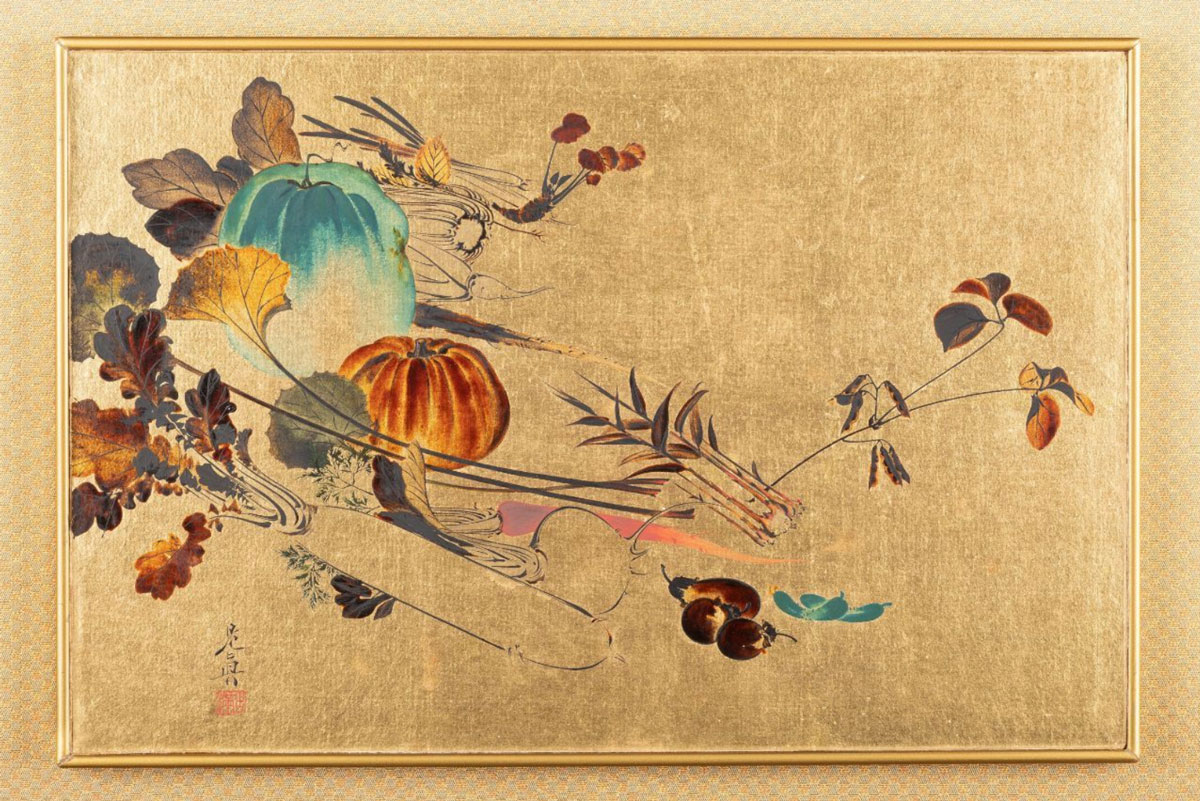
Tōshūsai Sharaku, The Actor Ichikawa Omezō as the Manservant Ippei in The Loved Wife’s Parti-Colored Reins (detail), 1794; Courtesy Art Institute Chicago
Continuing with our list of not-to-miss exhibitions from our AWNY member museums, below are some more fantastic exhibitions currently on view across the country. Be sure to visit them if you’re in town or traveling to these cities!
Art Institute Chicago
Kabuki-Actor Portraits by Tōshūsai Sharaku
Through October 14, 2024
In this newly opened exhibit, the Art Institute explores the short but generative career of Tōshūsai Sharaku, who produced around 150 prints representing Kabuki actors between the summer of 1794 and early spring of 1795. In a mere ten months, these prints of unusual characters with exaggerated, almost comic expressions and awkward poses were popular mementos for fans of the stage.
To learn more, click here.

Hunting on Horses (騎馬狩獵) (detail), c. 1600s–1700s, China, Ming dynasty to Qing dynasty; Courtesy The Cleveland Museum of Art
The Cleveland Museum of Art
Six Dynasties of Chinese Painting
Closing Sept 1, 2024
Six Dynasties of Chinese Painting presents a selection of the museum’s most important paintings that cover six different dynasties, including the modern era. These paintings represent various subject matter, from figures, landscapes, animals, birds, and flowers to religious and historic themes; their dates of acquisition range from the museum’s founding years to the most recent additions, demonstrating a continuous commitment to Chinese painting, a field that has always been the strongest asset of The Cleveland Museum’s Chinese collection.
To learn more, click here.

Tokio Ueyama, The Evacuee, 1942, oil on canvas, 24 x 30 in; Courtesy Japanese American National Museum; Gift of Kayoko Tsukada; ©Estate of Tokio Ueyama; Courtesy Denver Art Museum
Denver Art Museum
The Life and Art of Tokio Ueyama
July 28, 2024 – June 1, 2025
Newly opened last week, The Life and Art of Tokio Ueyama tells the story of Ueyama’s life, including his early days as an art student in San Francisco, Southern California, and Philadelphia; his travels abroad in Europe and Mexico; his role as artist and community member in Little Tokyo, Los Angeles; and his incarceration during World War II at the Granada Relocation Center, now the Amache National Historic Site, in southeast Colorado.
To learn more, click here.

Liu Dan 劉丹, Scholar’s Rock, 1993, ink on paper; Purchase through the generosity of Alan J. and Suzanne W. Dworsky and through the Ernest B. and Helen Pratt Dane Fund for Asian Art, 2003.83. © 1993 Liu Dan; Courtesy Harvard Art Museums
Harvard Art Museums
East Asian Art Gallery Reinstallation
Through December 1, 2024
One of the highlights in their recently reinstalled East Asian Art Gallery is this ink on paper work by Liu Dan. For at least 2,000 years, Chinese artists and scholars have collected unusually shaped stones, commonly known as “scholars’ rocks,” to display in their studios and gardens, regarding them as microcosmic landscapes to be explored in the mind’s eye. Rendered on an almost planetary scale, Liu Dan’s Scholar’s Rock is part of a larger display at the Harvard Art Musuems examining the many ways in which artists in East Asia have manipulated scale to change the viewer’s perception of a subject.
To learn more, click here.

Rubbing of Ritual Disc with Dragon Motifs (Bi) (detail), China, 19th-early 20th c., hanging scroll, ink on paper, 14 5/16 in (36.35 cm); Bequest of Laurence Sickman, F88-45/110; Courtesy Nelson Atkins Museum of Art
Nelson Atkins Museum of Art
The Art of Ink Rubbings: Impressions of Chinese Culture
July 20, 2024 – February 02, 2025
This newly opened exhibition features more than 25 rubbings, as well as some of the original objects, offering a window into the remarkable practice, variety, and allure of Chinese ink rubbing. As early as 600 C.E., scholars and collectors commissioned ink rubbings to preserve ancient inscriptions carved on stone or bronze. Due to its simplicity, beauty, and affinity to important historical objects, ink rubbings’ popularity endured despite advances in other reproductive media. In the 1930s, future Nelson-Atkins director Laurence Sickman (1907–1988) amassed an extensive collection of ink rubbings and, with other collectors, introduced Chinese ink rubbings to a global audience.
To learn more, click here.

Shibata Zeshin, Japanese, 1807-1891, Still Life with Vegetables, 19th c., colored lacquer and gold leaf on paper, 7 1/8 × 10 5/8 in (18.1 × 27 cm); On loan from The Catherine and Thomas Edson Collection, L.2009.10.3; Courtesy San Antonio Museum of Art
San Antonio Museum of Art
The Exquisite Art of Shibata Zeshin: Lacquerwares and Paintings
Through October 27, 2024
Japanese lacquerwares reached a pinnacle in the work of artist Shibata Zeshin during the Meiji period (1868–1912). Zeshin was a multi-talented artist who learned traditional painting techniques but was also extraordinarily skilled in using lacquer. Notably, he adapted this difficult medium to painting by inventing a way to maintain the flexibility of the lacquer so that a scroll could be rolled without cracking. Works on view include sake ewers, stacked boxes for food, storage boxes for paper and clothing, writing boxes with inkstones and brushes, and paintings.
To learn more, click here.
